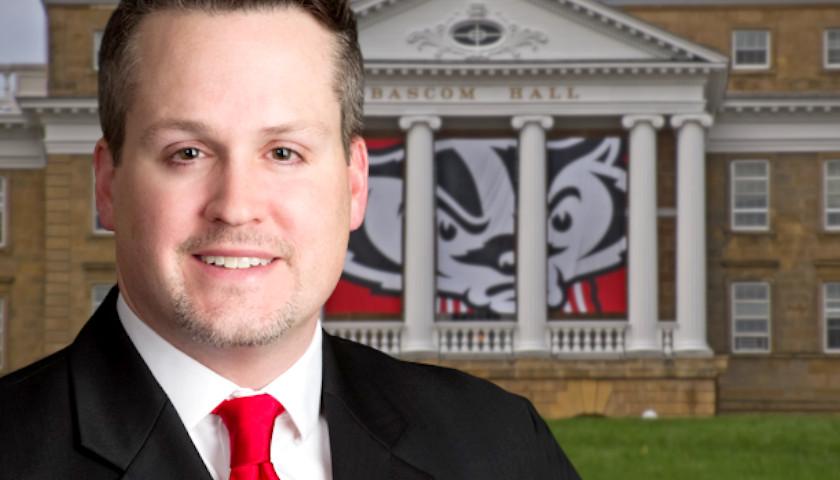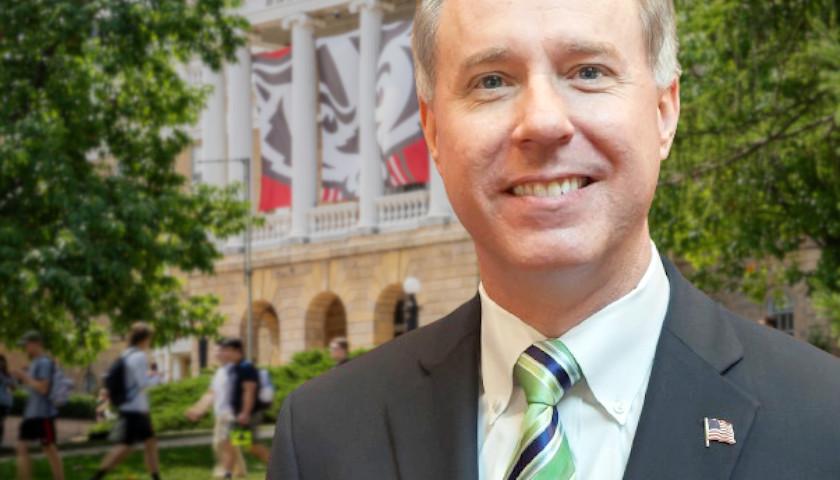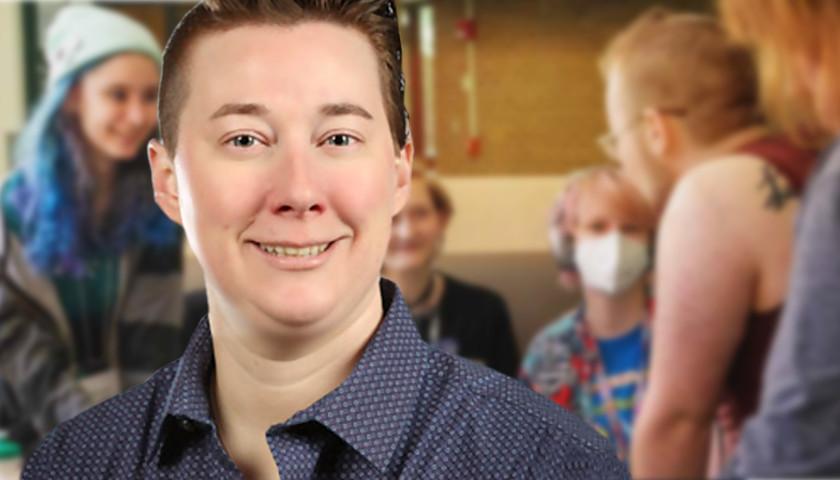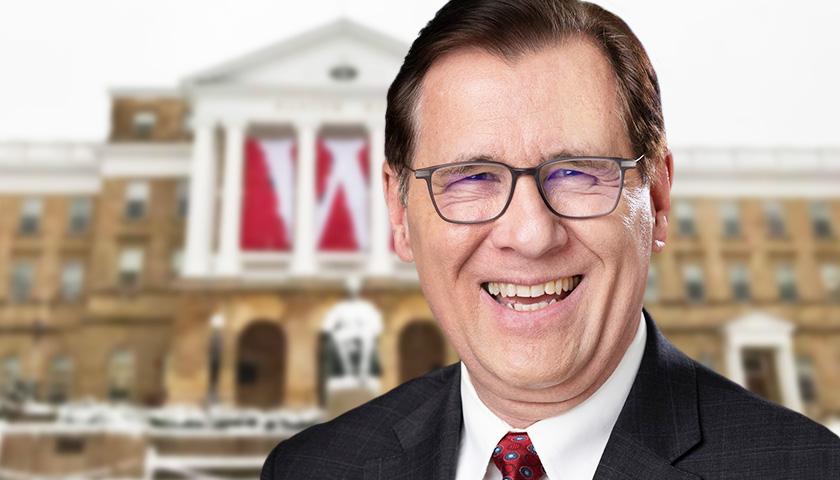by Ryan Owens, JD, PhD
The University of Wisconsin System recently commissioned a study to examine students’ views on free speech issues. Roughly 10,500 students across 13 campuses responded. The survey offers numerous findings—some good, some bad—that merit deep consideration. One finding, however, is abundantly clear. There are two very different college experiences based on students’ views. Right-leaning students report that they are silenced, are pressured to agree with instructors, and face unwelcoming environments. Left-leaning students, on the other hand, enjoy a friendlier environment with fewer obstacles. These results call for significant institutional reforms.
Right-leaning students report that instructors stifle them in the classroom.
Some of the most alarming survey results involve whether students ever felt “pressured by an instructor to agree with a specific political or ideological view being expressed in class.” Fully 60.6% of Republican students reported feeling such classroom pressure. What’s more, 44.8% of those Republican students felt pressured “often” or “extremely often.” Conservatives were even more beleaguered. 64.4% of “very conservative” students and 61.5% of “somewhat conservative” students felt pressured at least once to agree. Of those who felt pressured, 53.1% of very conservative students and 38.2% of somewhat conservative students felt pressured to agree “often” or “extremely often.”
The world is very different for Democratic students. Only 19.7% of Democratic students reported ever feeling pressure to agree with the instructor, and only 16.3% of them felt pressured to agree “often” or “extremely often.” 15.1% of “very liberal” and 22.3% of “somewhat liberal” students reported ever having felt pressured to agree with the instructor. Of those who felt pressured, only 14.6% of “very liberal” and 15.9% of “somewhat liberal” students felt pressure “often” or “extremely often.”
Right-leaning students also reported that instructors discouraged views in class and made them uncomfortable when expressing their views.
16.7% of Republican students, 15.8% of somewhat conservative students, and 20.3% of very conservative students reported that their instructors “often” or “extremely often” discouraged the exploration of varied viewpoints. Democratic and “liberal” student experiences reported the opposite. Only 3.4% of Democratic students believed that their instructors discouraged the exploration of varied viewpoints, as did 2.6% of “very liberal” and 3.5% of “somewhat liberal” students.
Right-leaning students also reported feeling uncomfortable expressing their views in class. 31.2% of Republican students, 30.7% of somewhat conservative students, and 36.7% of very conservative students reported that their instructors created an environment where students with unpopular views felt uncomfortable expressing them. Only 8.9% of Democratic students, 8.3% of “very liberal” students, and 8.9% of “somewhat liberal” students reported that their instructors created an uncomfortable environment.
Conservatives and Republicans report that they remain silent because they worry their instructors will lower their grades because of their views. 68.8% of Republican students, 64.5% of somewhat conservative students, and 73% of very conservative students stayed silent because they worried their instructors would give them lower grades. Democrats and “liberals,” however, did not much worry about politically induced downgrading. 19.1% of the already small number of silent Democratic students, 12.1% of silent “very liberal” students, and 19.4% of silent “somewhat liberal” students remained silent for fear of a worse grade.
Right-leaning students also stated that they generally were unable to express their views on controversial issues on campus.
Consider students’ levels of comfort expressing their views about transgender issues. Huge differences separate left-leaning and right-leaning students. Fully 66.9% of Republican students said they were not comfortable expressing their views on transgender issues. Conservatives reported about the same, with 68.5% of somewhat conservative and 63.6% of very conservative students reporting that they were “not at all” or only “a little” comfortable expressing their views. Democrats and liberals, however, felt much more at home. 26.3% of Democrats said they were “not at all” or “only a little” comfortable expressing their views. 16.3% of “very liberal” students and 29.5% of “somewhat liberal” students said they were “not at all” or “only a little” comfortable expressing their views. Similar results obtained when examining student views on abortion.
Simply put, right-leaning students report much worse treatment than left-leaning students. That’s an institutional failure.
What can be done about it?
For starters, universities must prioritize intellectual diversity and pluralism on campuses. In recent years, we have seen an explosion of DEI (diversity, equity, and inclusion) requirements on campuses. What seems clear from the data, however, is that there must be more inclusion—more “I” in “DEI.” Students, faculty, and administration are becoming more ideologically homogenous and appear to be using their critical mass to ostracize those with whom they disagree. That kind of illiberal group think harms learning and spells doom for higher education.
Administrators or state legislatures might prioritize intellectual diversity by more clearly defining what “inclusion” means in their charter documents. Today, most DEI standards are vague. For example, it is difficult to determine what a “good” DEI statement is because no one really understands the goals and how to measure success. By more clearly defining terms and adding intellectual diversity to those terms, universities can begin to provide a better education for all students.
Similarly, administrators or state legislatures could incentivize transparency. Universities could provide an annual list of its invited speakers so that people interested in obtaining intellectual balance could examine whether it exists. Likewise, placing syllabi on publicly accessible websites could help determine whether courses are balanced. As Justice Louis Brandeis once said, sunlight is the best disinfectant. Publicly posting course syllabi could shed light on the balance or imbalance that exists across courses or disciplines.
Another problem the survey reveals is the depth of intolerance among many students. By prioritizing free speech policies, campuses can model good behavior. Students should learn why free speech principles cultivate political, academic, and social freedom. Such an action will not only tone down institutional problems, it may also ratchet down student-on-student social pressure.
A university’s goal should be the best education for all its students. That means exposing them to a multitude of views. Such does not appear to be happening today and our students and society suffer because of it. The UW System President should be commended for opening up system schools for student evaluations. More universities should show such open-mindedness.
– – –
Ryan Owens is the George C. and Carmella P. Edwards Professor of American Politics and Leon Epstein Faculty Fellow at the University of Wisconsin-Madison.
Background Photo “University of Wisconsin-Madison Campus” by Ron Cogswell. CC BY 2.0.





